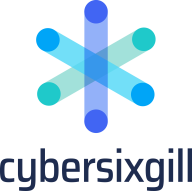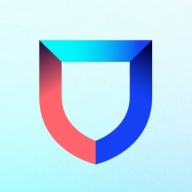


Cybersixgill and Lacework FortiCNAPP are competitors in cybersecurity, with Lacework FortiCNAPP having an edge in feature offerings that justify its higher cost. Cybersixgill excels in pricing and support, creating a competitive balance.
Features: Cybersixgill offers real-time threat intelligence, deep web monitoring, and advanced analytics. Lacework FortiCNAPP provides robust cloud security, workload protection, and compliance management. Its extensive features make it ideal for enhanced cloud integration.
Room for Improvement: Cybersixgill could enhance its interface simplicity and expand its open-source coverage. Lacework FortiCNAPP could benefit from simplifying its documentation, reducing its complexity for new users, and offering more support resources for initial setup.
Ease of Deployment and Customer Service: Cybersixgill facilitates smooth integration with strong support services. Lacework FortiCNAPP requires a more involved learning curve due to its extensive capabilities, but proactive customer service aids in onboarding.
Pricing and ROI: Cybersixgill is cost-effective with high ROI through efficient operations. Lacework FortiCNAPP involves a higher initial cost but delivers substantial long-term value through advanced security features, appealing to those prioritizing high functionality over budget.
| Product | Market Share (%) |
|---|---|
| Zafran Security | 1.0% |
| Lacework FortiCNAPP | 1.3% |
| Cybersixgill | 0.3% |
| Other | 97.4% |


| Company Size | Count |
|---|---|
| Small Business | 4 |
| Midsize Enterprise | 4 |
| Large Enterprise | 3 |
Zafran Security integrates with existing security tools to identify and mitigate vulnerabilities effectively, proving that most critical vulnerabilities are not exploitable, optimizing threat management.
Zafran Security introduces an innovative operating model for managing security threats and vulnerabilities. By leveraging the threat exposure management platform, it pinpoints and prioritizes exploitable vulnerabilities, reducing risk through immediate remediation. This platform enhances your hybrid cloud security by normalizing vulnerability signals and integrating specific IT context data, such as CVE runtime presence and internet asset reachability, into its analysis. No longer reliant on patch windows, Zafran Security allows you to manage risks actively.
What are the key features of Zafran Security?
What benefits can users expect from Zafran Security?
In industries where security is paramount, such as finance and healthcare, Zafran Security provides invaluable protection by ensuring that only exploitable vulnerabilities are addressed. It allows entities to maintain robust security measures while allocating resources efficiently, fitting seamlessly into existing security strategies.
Cybersixgill empowers organizations with cyber intelligence by monitoring open sources and dark web activities, tracking threat exposure, and assessing risks without on-premises infrastructure.
Cybersixgill enables powerful intelligence gathering by providing access to a comprehensive data lake of deep and dark web activity, identifying trends in malware, and analyzing underground markets. Organizations can monitor illegal activities like credit card sales and conduct searches on hacker forums using its API and Investigative Portal. Automatic translations and alerts enhance threat detection, making it a vital tool for real-time cybersecurity management. Users have expressed a desire for better real-time updates and improved data source coverage along with more user-friendly query specificity and training materials.
What are the key features of Cybersixgill?Cybersixgill's cybersecurity solutions are critical in sectors like finance, healthcare, and retail where sensitive data protection is paramount. Organizations leverage the platform to proactively detect threats and safeguard customer information, significantly reducing the risk of data breaches and fraud while maintaining industry compliance.
Lacework FortiCNAPP provides robust cloud security, combining vulnerability management and multi-cloud insight with user-friendly controls, machine learning detection, and compliance support.
Lacework FortiCNAPP specializes in cloud security by merging machine learning anomaly detection with agent-based vulnerability management to offer detailed alerts and compliance reports. Its comprehensive approach allows continuous monitoring across AWS and Kubernetes, providing insights from an attacker's perspective. The platform offers automation and seamless Slack integration, facilitating collaborative and efficient cloud security management. Users value its ability to handle multi-cloud environments and scan IAC scripts, configurations, and compute nodes across AWS and GCP.
What are the key features?Organizations across sectors leverage Lacework FortiCNAPP for cloud security, focusing on compliance, security posture, and vulnerability management. It is widely used for monitoring AWS and Kubernetes environments, scanning IAC scripts, configurations, and securing compute nodes. It supports multi-cloud security posture management and log ingestion, enabling companies to maintain strong cloud infrastructures without dedicated security layers.
We monitor all Vulnerability Management reviews to prevent fraudulent reviews and keep review quality high. We do not post reviews by company employees or direct competitors. We validate each review for authenticity via cross-reference with LinkedIn, and personal follow-up with the reviewer when necessary.